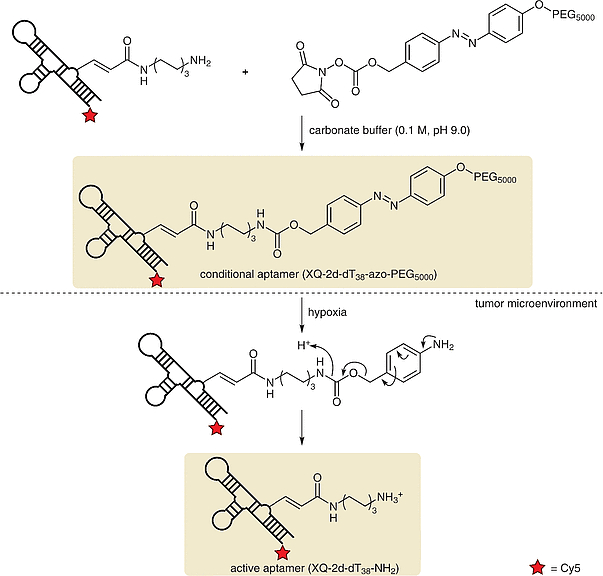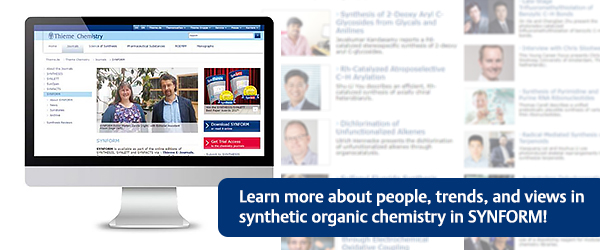

Contributors: Dirk Trauner, Alexander J. E. Novak
Zhou F, Fu T, Huang Q, Kuai H, Mo L, Liu H, Wang Q, Peng Y, Han D, Zhao Z. * Fang X. * Tan W. * Hunan University, Changsha, Institute of Chemistry, Chinese Academy of Sciences, Beijing, University of Chinese Academy of Sciences, Hangzhou and Shanghai Jiao Tong University, P. R. of China
J. Am. Chem. Soc. 2019;
141: 18421-18427
Key Words
aptamers - caging - cancer - azobenzenes - imaging

Significance
Aptamers and antibodies are widely used as probes in tumor imaging. Recognition of the tumor by aptamers is based on overexpression of their targets in cancer cells, not target exclusivity. Here, the authors present a strategy to increase the specificity of aptamers by designing a conditional aptamer. Upon exposure to the tumor microenvironment the aptamer is liberated and able to bind its target, thus leading to higher recognition selectivity.
Comment
The authors conjugated an azobenzene-linked PEG5000 chain as a steric blocking group to the aptamer XQ-2d. The azobenzene functions as a redox-sensitive caging unit. When exposed to hypoxia in the tumor microenvironment the azobenzene is cleaved, liberating the active aptamer close to the tumor. The authors demonstrate that this strategy can also be applied to antibodies.
SYNFACTS
阅读SYNFACTS更多论文,请点击这里。

